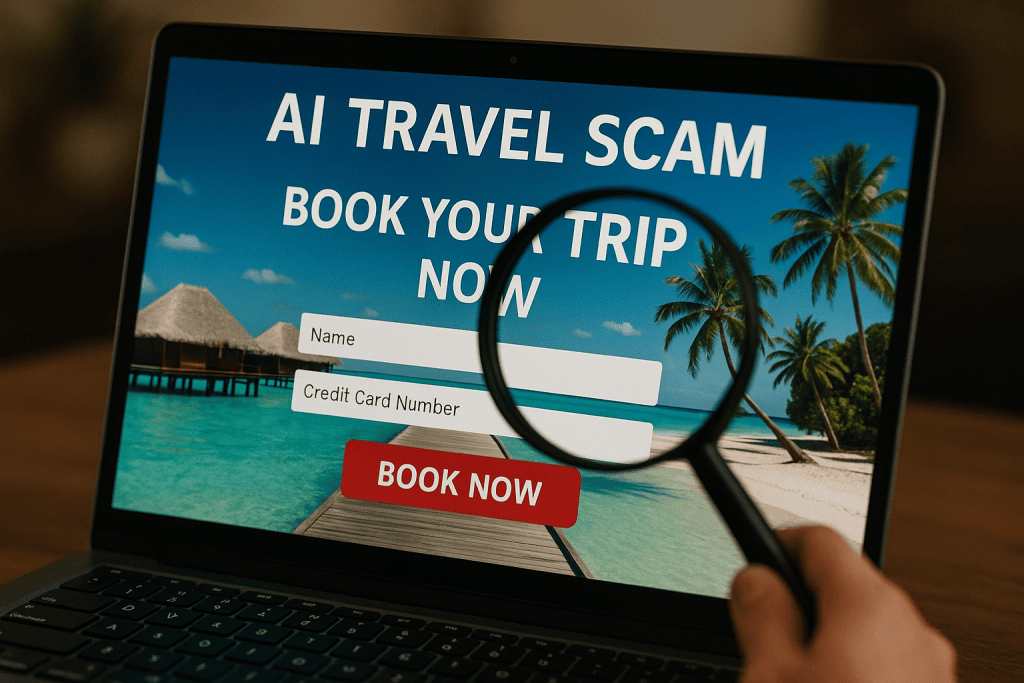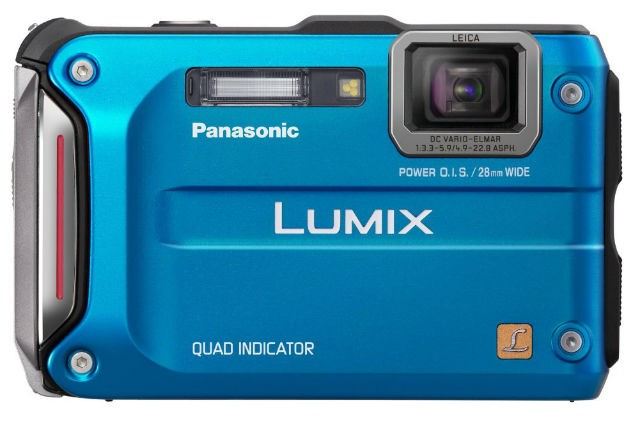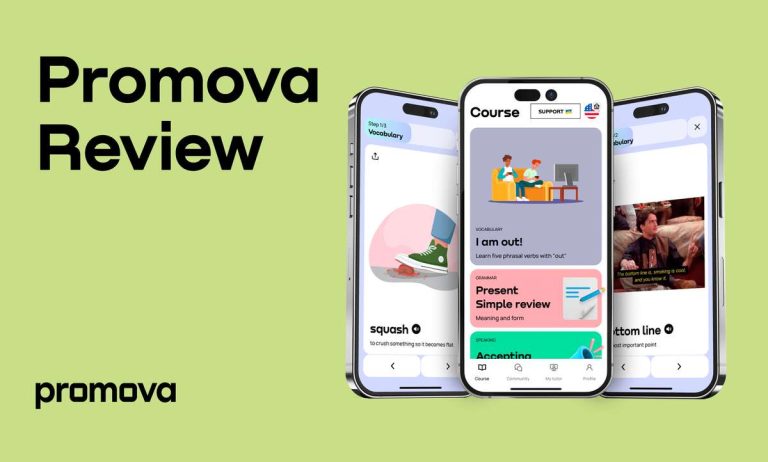That Flight Deal You Just Found Might Be an AI Travel Scam (Here’s How to Tell)
We’ve chased our fair share of travel deals over the years. Flights for pennies on the dollar, hotels so cheap they almost paid us to stay and deals on everything from planes and trains to rental cars and even cruises.
One travel deal that stands out was a crazy cheap flight to Kos, Greece after months spent living in Spain. We spent our days wandering ancient ruins with our kids, eating feta straight from local markets, and swimming in water so clear it looked unreal. That quick side trip wouldn’t have happened had we not found a great deal online.

However, even back then, while often stumbling on some amazing travel deals, we’ve also witnessed the darker side of booking deals online. While the deals back then often came with caveats and certain hoops we had to jump through to get them, most were at least legit.
As technology races ahead, scammers are finding new ways to make fake travel websites, emails, and even phone calls look completely legitimate. Artificial intelligence has made it easier than ever to build scams that seem real at first glance and often even give seasoned travel deal experts a hard time telling truth from fiction.
Now, when we plan trips, we double-check every offer through a flight price drop website like SlickTrip. It compares prices across trusted travel sites and sends real alerts when fares actually drop. It’s one of the simplest ways to make sure a great deal is real and not the work of a clever bot trying to scam your hard earned money.
Here’s what we’ve learned from years of travel, trial, and more than a few questionable booking links.

The Fake Customer Service Call
Scammers are now using AI-generated voices to pose as airline or hotel representatives. These calls often sound completely real, with calm and professional voices that include accurate details like flight numbers or booking references. The goal is to trick travelers into confirming credit card or account information.
The safest move is to hang up and call the company directly using the number on its official website. If the issue is legitimate, they will already know about it and will be able to direct you to the proper person.

The Too Perfect Flight Deal
We’ve all seen them, flight deals that look almost too good to be true. These days, AI can create entire fake booking websites that look exactly like the real thing. They copy logos, design, and even fake reviews. You click, pay, and the next thing you know, your seats don’t exist and when you go to check things, the site disappears.
Before you book, check the web address carefully. Watch for odd spellings or endings like .net instead of .com. Use credit cards instead of debit cards for extra protection and, whenever possible, stick with well-known booking platforms or cross-check through trusted tools.
The Real Looking Confirmation Email
We once got an email that looked exactly like a real airline confirmation. The layout, colors, and wording were all perfect. The only clue was the sender’s address, which was slightly off.
AI makes these messages look more believable than ever. If something feels off, don’t click any links. Instead, log directly into the airline or hotel’s official website to confirm your booking. It takes a few seconds but can save you a big headache.

The Urgent Text or WhatsApp Message
You’re at the airport, juggling coffee and passports, when a text pops up saying your flight has been canceled. It includes a link to rebook immediately. It’s easy to panic and click.
Airlines rarely send urgent updates this way, and when they do, they’ll direct you to their official app, not a random link. We’ve learned to always double-check in the airline’s app or on the departure board before tapping anything.
How to Spot the Red Flags
Over the years, we’ve noticed the same patterns again and again. Scams often have strange grammar or odd wording, payment requests through bank transfers or gift cards, urgent messages pushing you to act fast, or links that don’t match the real company website.
Even experienced travelers can miss the signs, especially when tired, distracted, or excited about a new adventure. We’ve been there too.

If You’ve Been Fooled
It happens to everyone eventually. If you’ve been scammed, contact your bank or credit card company immediately. Change your passwords and let the airline or hotel know what happened so they can flag the issue.
You can also report scams to your local consumer protection agency. In the U.S., the FTC has an easy online form for reporting travel fraud. Sharing your story can help protect other travelers too.
The Bottom Line
AI is transforming travel, sometimes in wonderful ways, sometimes not. The same tools that help us find hidden gems and better deals can also be used to create scams that look perfectly real.
A few minutes of awareness can make all the difference. Next time you find an incredible deal, take a moment to verify it. Use a flight price drop website like SlickTrip to make sure it’s real. If it is, great, go ahead and book it. If it’s not, you’ll have saved yourself money, stress, and maybe even a missed vacation.
Because the best part of travel isn’t finding the cheapest flight, it’s the memories you make once you actually get there.








